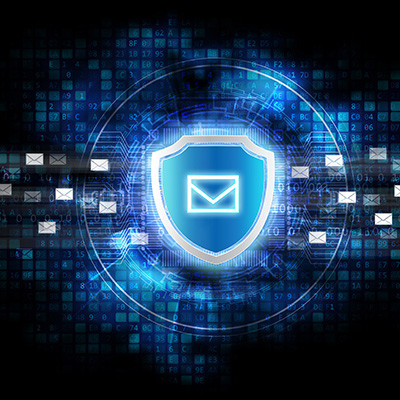JS Business Solutions Blog
Your Email is a Ticking Time Bomb if Not Managed Properly
It’s easy to think of email as something that just works. You open up Outlook or log into Gmail and your mail is there. Most people aren’t even aware of the vast, complex set of systems required for email to even work—and we don’t blame you. It’s extremely complicated.
That being said, if nobody is actively managing your email, providing protection for the underlying technology, and making sure that it was and remains configured properly, it’s possible that your email could be working fine while opening you up for unseen threats.
Email is the Primary Entry Point for Most Cyberattacks
In 2022, 75 percent of organizations fell victim to a successful email attack. This could range from spam, to the delivery of malware or ransomware, data theft, spoofing, and dozens of other types of attacks that come in through email.
On the surface, corporate email solutions haven’t changed much over the years, but some systems combine more modern best practices with advanced cybersecurity protections that can help keep inboxes safer. While decision-makers might think, “Well, my email works fine, I don’t think we need to mess with it,” the efforts to harden your email actually serve as a huge step towards preventing bigger, more devastating issues.
What’s even worse is that many businesses might have an IT provider who is managing their technology, but they aren’t paying attention to email or investing in the tools to properly protect it from modern-day threats. Of course, when a devastating issue happens and your business is suffering from it, that’s when the work falls outside of your contract and your IT provider starts sending invoices.
In other words, it’s a bad situation to be in.
What Makes a Good Email Security Solution?
Train Your Users to Spot Email Threats
One of the biggest factors when it comes to email security is user education. I know, this isn’t really a technical aspect that your IT department can roll out and install, but if your end users don’t understand the risks and have a basic understanding of what constitutes a cybersecurity threat, then you could still be looking at problems even with a best-in-class security solution in place.
Fortunately, it’s pretty easy to provide that education over time using phishing simulation. It works by sending out emails that look legitimate, but are designed to trick your staff the same way that a real phishing email will try to trick them. If your employee falls for one of these fake phishing emails, it will gently explain to them what just happened, explain the risks, and provide training resources. In addition, your entire staff can log into a portal to review training courses and take cybersecurity awareness quizzes, which will rank everybody in your company. It’s a good way to keep your staff up to speed on issues while testing their applied knowledge.
Meet Regulatory Compliance Standards
More and more industries are adopting their own compliance standards, and email has been becoming an important part of this across the board. The truth is though, nearly any organization deals with some level of sensitive information from time to time. Under most circumstances, your email shouldn’t be a place where you are storing or transmitting sensitive data like financial credentials, health records, credit card information, or passwords. There are additional systems that can be applied that make this safer to do, like third-party encryption tools, secure portals for your customers to log into, and other solutions, but regular email just isn’t designed to move sensitive information securely.
Email Should Be Backed Up
Your typical data backup device that backs up your files might not cover your email solution. For example, if all of your email stays in Microsoft 365 in the cloud, it’s likely not getting covered by the backup device on your server that protects your files and software databases.
Fortunately, most cloud-based email solutions have backup built in, it just needs to be configured, tested, and audited regularly. All of this should be clearly documented so decision-makers can get the peace of mind they need when reviewing disaster recovery and business continuity plans, as well as security audits, and even insurance renewals.
Email Isn’t Quite as Simple as It Seems
It’s easy to ignore, but it can be disastrous if you let email security fall to the wayside. We highly recommend you contact us at (781) 715-1900 and ask us to audit your technology to make sure you don’t have any wide-open doors that could be letting threats slip in.




Comments